- Home
- Equipment Reviews
-
Amplification Digital Integrated Mono Block Preamplifier Phono Solid State Tube Analog Sources Cartridges Tape Tone Arms Turn Tables Digital Sources Digital Disc Players DACs Music Servers Streaming Music Services
-
Accessories Power Conditioners Room Accoustics Racks & Stands Audio Software Other iPod iPod Speakers iPod Headphones iPod Transports Headphones Over Ear On Ear In Ear Headphone Amplifier
-
- Audio News
- Event Reports
- California Audio Show, San Francisco
- Consumer Electronics Show
- T.H.E. Show
- Rocky Mountain Audio Fest
- AXPONA
- Salon Son & Image
- Hi-Fi Show & AV Expo
- High End
- Lone Star Audio Fest
- Capital Audio Fest
- TAVES - Toronto Audio Video Entertainment Show
- AK Fest
- Home Entertainment Show
- New York Audio $ AV Show
- Open House Events
- Spotlight
- Music
- The Columns
- 2024 California Audio Show
Doug Schroeder’s Audiophile Law #2: Thou Shalt Not Skimp On Power Cords
By: Doug Schroeder | July 2007
Latest Reviews & Audio News
-

PS Audio AirLens and DirectStream DAC Mk2 Review
(July 26, 2024) -

Audio Note UK Meishu Tonmeister 300B integrated amplifier, P3 Tonmeister stereo amplifier, M6 Phono Balanced Preamp Review
(July 12, 2024) -

Douglas Schroeder’s One Year Exploration of Digital Front End Systems
(June 25, 2024) -

Arya Audio Labs RevOpods Anti-Vibration Feet Review
(June 25, 2024) -

Lego Icons Retro Radio Review
(June 14, 2024) -
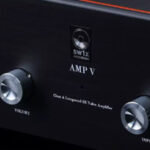
SW1X Audio Design AMP V “Titan” Special directly-heated triode integrated amplifier Review
(June 14, 2024) -
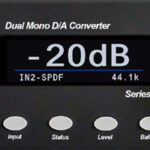
Bricasti Design Model 1 Series II D/A Converter and M5 Network Player Review
(May 24, 2024) -
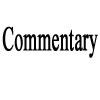
Star Wars – The Empire Strikes Back – In Concert, May 2, 2024
(May 20, 2024) -
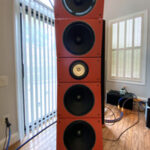
PureAudioProject Quintet15 with Voxativ AC-X field-coil open-baffle loudspeaker system Review
(May 20, 2024) -
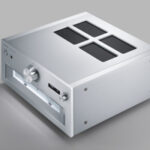
Technics SU-R1000 reference stereo integrated amplifier Review
(May 20, 2024) -
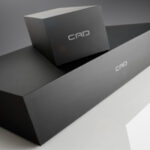
Computer Audio Design GC 1.1 & GC3.1 Ground Control external grounding systems Review
(May 20, 2024) -

Andy Grove of Audio Note UK on IO LTD
(March 23, 2024) -
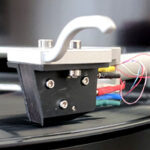
Audio Note UK IO Limited field-coil cartridge system Review
(May 20, 2024) -
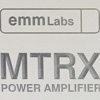
EMM Labs MTRX monoblock Input Board Upgrade Review
(March 7, 2024) -

May 2018 Sibelius Violin Concerto concert video via Berliner Philharmoniker Digital Concert Hall app
(February 16, 2024)
-
Categories
-
Amplification Digital Integrated Mono Block Preamplifier Phono Solid State Tube Analog Sources Cartridges Tape Tone Arms Turn Tables Digital Sources Digital Disc Players DACs Music Servers Streaming Music Services
-
Accessories Power Conditioners Room Accoustics Racks & Stands Audio Software Other iPod iPod Speakers iPod Headphones iPod Transports Headphones Over Ear On Ear In Ear Headphone Amplifier
Site Sections
Copyright ©1996-2024 All Rights Reserved.
Popups Powered By : XYZScripts.com

Audiophiles could fill the world with arguments over the merits of aftermarket cabling, and there are plenty of skeptics regarding the benefits of paying a pricey premium for a power cord. I should know, I was one of them. There was a time when I would have been solidly on the side of those who guffawed at the prices paid for a wire with a plug and an IEC.
Not any longer. My journey in audio has led me to the unshakable conclusion that power cords are, with today’s technology level, critical in achieving the apex of listening enjoyment from one’s system. How important are they? Important enough that I suggest you revise in your mind how the “front-end” of an audio system looks.
For most of us, we consider the source (i.e. turntable or cdp typically) as the “front-end”, as though it all starts at the disc or album. I would like to extend that perception, with this particular audiophile law, to include the power cord for the source. While commonly acknowledged to be important, aftermarket cords take on an increased significance when used with the source. The front end doesn’t begin with the source, but with the power cord for the source. I suggest that you front end load your power cable expenditures to obtain a very high quality power cord for your source.
Just how critical the quality of the power cord used with the source can be was reaffirmed recently when I replaced my venerable Xindak PF Gold cord (MSRP $1,600 apprx) with an MIT Oracle AC2 cord (MSRP $3,500 apprx). I won’t spend much time elucidating the differences in sound, except to say that it made my lovely sounding Rega Saturn cdp, a very well received player, an altogether “new and improved” unit. Rega has not yet done an update to the Saturn as it’s only been months on the market, but I did the update by mating it with a cord that is supplying a far more, for lack of better description, acoustically palatable power and allowing it to perform at a higher level than I thought possible.
To put things into perspective, I do not bother writing about enhancements or improvements which are marginal, which one has to strain to hear or ponder whether an improvement exists. I may write articles involving components which are very similar where differences may be subtle. However, when looking to upgrade my main listening system, if there’s a change it needs to be immediately noticeable for it to be worthy of consideration as an improvement. So, when I say I heard a significant improvement, it means I didn’t have to think it over, or replay discs to hear it. The change was instantaneous and overwhelmingly satisfying. If it is not an easily detectable difference, there’s no point in making a change. If you cannot easily detect a difference within 120 seconds, then the “improvement” will likely not yield long-term satisfaction. (This is not to say that all differences which are easily detectable are going to yield the most satisfaction long-term, but rather to suggest that if a component change is going to be considered, it must be immediately obvious or else a person is largely wasting their time. Of course, you are the judge of how much difference is significant.)
Occasionally on the discussion forums, individuals ask whether they should start building their system at the front-end, or at the back-end with the speakers. I’ll say this, whichever end you begin: Thou shalt not skimp on the power cord to the source! Just as the upper most cornice of snow that breaks off of a peak effects the entire avalanche, so the quality of the power to the source affects the signal the source produces. (Yes, one can trace this argument back further, to include power conditioning, which I endorse, and even the building’s electrical utility, which in real life most of us will not touch).
If one stops to consider, a degraded signal from the source can never be fully atoned for – it can be shaped and contorted to suit but will never be purer and faithful to the original than the source can produce. It is commonly accepted wisdom today that speaker cables are a component and much time is spent in pursuit of them. It’s time all audiophiles accepted the corollary that power cables have also become as important a component with as much power to influence the sound of a stereo as speaker cables. The listener today has the means to purify the source for the source, and if serious about obtaining the utmost from equipment should pursue a fine matching power cord to do so.